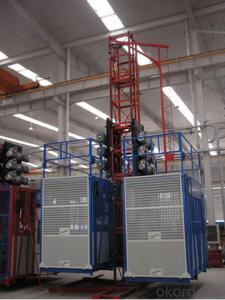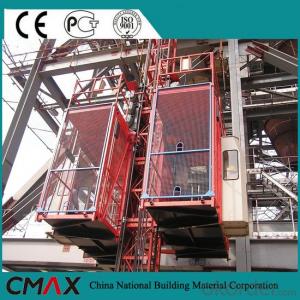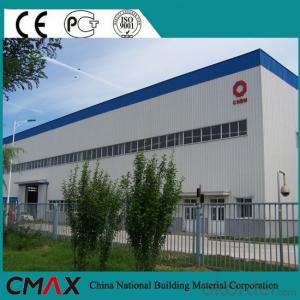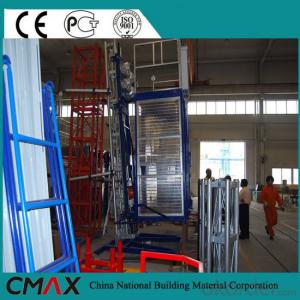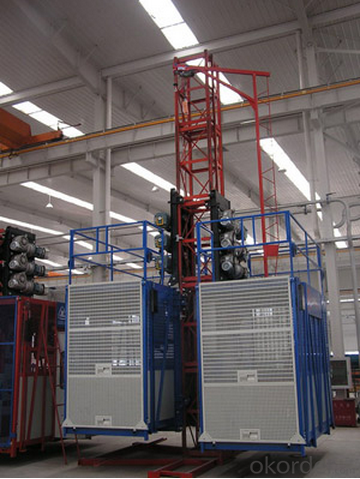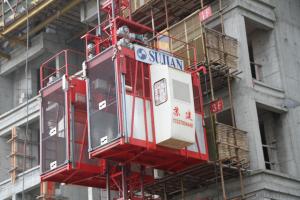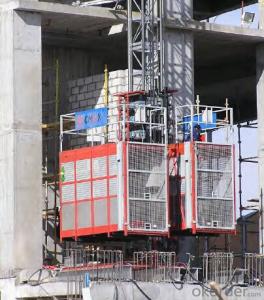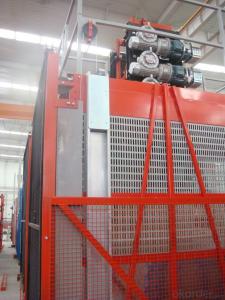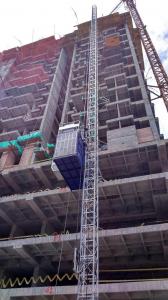Construction Elevator (SC200/200TD) for Sale
- Loading Port:
- China main port
- Payment Terms:
- TT OR LC
- Min Order Qty:
- 1 pc
- Supply Capability:
- 1000 pc/month
OKorder Service Pledge
OKorder Financial Service
You Might Also Like
Structure of Building Hoist:
All our machines are ISO, CE, SGS approved, 80% are exported to over 20 countries and earn A reputation form our customers. We commit a good quality with exceptional service and technical Support. On the premise of quality assurance, we always try to do some valid improvement of our hoists To make them better.
Specifically, Safety is the most importent, we strengthen the safety Control system by machanical and electrical measure, Any exceptional situation happens during The traveling, the system will cut the power automatically to stop the hoist. There are also other improvements to make sure the operation stable and reliable. That is theReason why we are so well received.
Product Feature:
1), Better safety control system.
2), High operational reliability.
3), Easy to use (install, dismount and maintain).
4), CE and ISO compliant.
5), Exceptional service and technical support.
6), Nice price, Will be within your budget.
Advantages of Building hoist
Our advantage:
1- More than 130,000 employee.
2- state-owned company and Fortune 500 enterprises.
3- own systems of production engineering.
4- 10 service branch in the work, such as UAE. KSA. IRAN, USA. INDIA, RUSSIA...
5- Professional construction equipment supplier.
6- technical experts with great experience in the sector.
7- More pls visit our factory, you will find we are your best choice.
Hoist Advantages:
1. Quality raw material, strict production management and career responsibility to make the hoist with the highest safety control, and the advanced design make it with good vision to enhance the safety.
2. Simple structure and low cost
3. Convenient in installation, disassembly and maintenance.
4. Energy-saving, starting current is lower than the rated current.
5. Adjustable speed, the maximum speed could reach 96m/min.
6. Frequency conversion control system, stable starting and breaking and low mechanical wear .
Building Hoist Images:
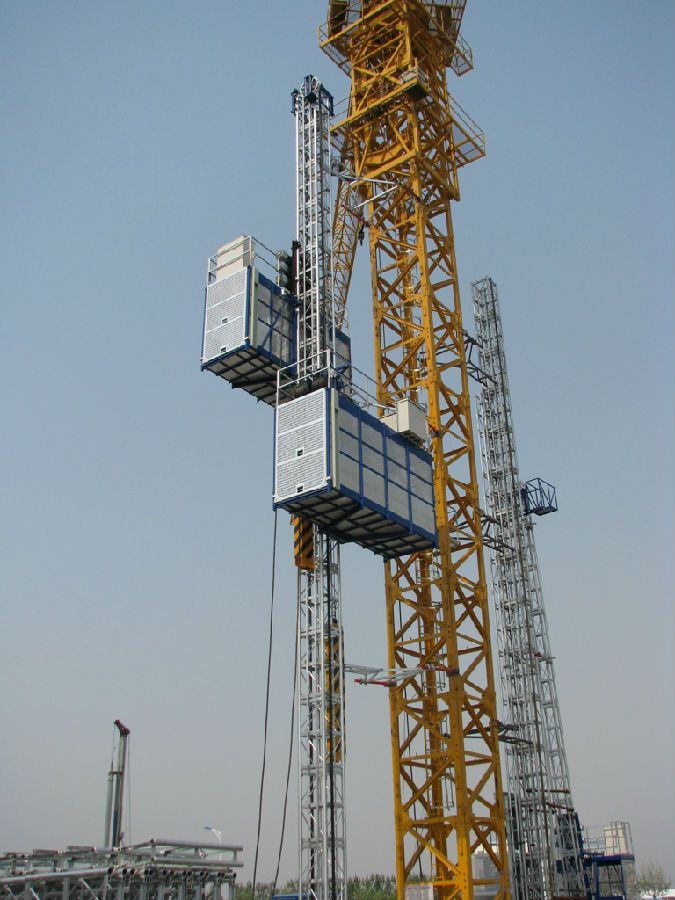

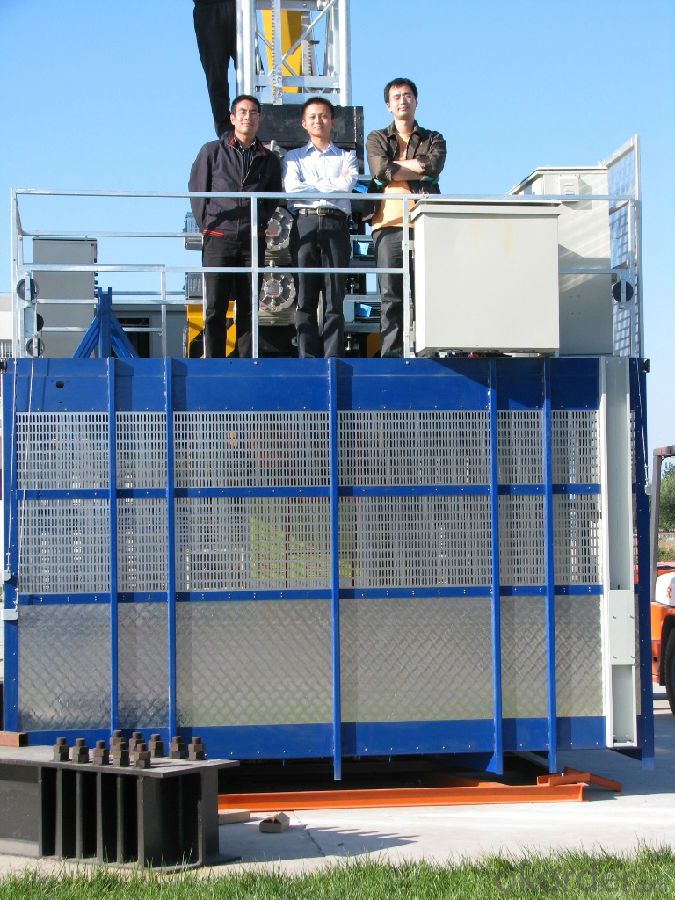

Building hoist Specifiction:
Elevator classification | Cage | Model | Rated load capacity(kg) | Lifting speed(m/min) | Moter power(kw) | Dimension inside cage (L*W*H)(m) |
Normal construction elevator | single cage | SCD200 | 2000 | 33 | 2*11 | 3.0*1.3*2.4 (3.2*1.5*2.4) |
SC200 | 2000 | 33 | 3*11 | |||
double cage | SCD200/200 | 2*2000 | 33 | (2*2) *11 | ||
SC200/200 | 2*2000 | 33 | (2*3)*11 | |||
SS100/100 | 2*1000 | 24 | 2*7.5 | |||
Frequency construction elevator | Single cage | SCD200 | 2000 | 0-63 | 3*15 | |
SC200 | 2000 | 0-63 | 3*15 | |||
Double cage | SCD200/200 | 2*2000 | 0-63 | (2*3)*15 | ||
SC200/200 | 2*2000 | 0-63 | (2*3)315 |
FAQ of Building Hoist:
Q: What is the building hoist main purpose?
A: Building hoist equipped with double or single cabin to transport the materials and labors up and down. It's the ideal
construction equipment for vertical transportation in the field of construction.
Q: What is the main structure of building hoist?
A: The P/M construction hoist mainly contains metal structure, driving system, electrical control system, cable guide &
protection system, electrical top crane and safety device.
Q: What is the meaning of the building hoist’s code?
A: Take SC200/200 for example: “SC” stands for rack and pinion hoist, “200/200” stands for double cage and capacity
is 2 tons per cage. “SC200” stands for single cage and capacity is 2 tons.
Q: What is the dimension of the cage?
A: Normally the cage dimension is 3X1.5X2.5M (L/W/H) for 2t type hoist. Details should be checked according to our
quotation sheet. Also, the size can be customized according to the factual site condition. There are two doors (entrance
& exit doors) for each cage, It can be produced as up & down sliding or ramping model for safety and convenience
- Q: This question asks for a comparison between electric and manual lifting equipment, highlighting their distinct features and operational differences.
- <p>Electric lifting equipment, such as electric hoists and cranes, operates using electrical power and is designed for heavy-duty lifting and repetitive tasks. It offers high efficiency, ease of use, and often requires less physical effort from operators. On the other hand, manual lifting equipment, like levers, pulleys, and manual hoists, relies on human power and is typically used for lighter loads or in situations where electrical power is not available. Manual equipment is generally more portable and requires no power source, but it is slower and more labor-intensive. Electric equipment is more suitable for industrial settings, while manual equipment is often used in smaller-scale operations or for temporary tasks.</p>
- Q: How does the driver of the construction elevator do the search for a sudden power failure
- When the elevator is running in an abnormal condition, it should stop immediately and take effective measures to bring the ladders down to the ground floor. When the electric is out of control in operation, the stop button should be pressed immediately. The stop button is not allowed until the failure is ruled out.
- Q: This question asks about the different types of hydraulic cylinders that are utilized in lifting equipment.
- <p>Hydraulic cylinders used in lifting equipment can be categorized into several types based on their design and application. The main types include: single-acting cylinders, which have one port for fluid and rely on the load or a spring to return; double-acting cylinders, which have ports on both ends and can extend and retract through fluid pressure; telescopic cylinders, which consist of multiple stages that can extend sequentially for greater reach; and rotary hydraulic cylinders, which provide a combination of linear and rotary motion. Each type is chosen based on the specific requirements of the lifting task, such as the need for speed, force, and control.</p>
- Q: This question asks for the method to determine the maximum weight that a building hoist can safely lift.
- <p>To calculate the weight limit of a building hoist, you must consider several factors: the hoist's mechanical capacity, the strength of the supporting structure, the load-bearing capacity of the cables or chains, and the safety regulations in place. Start by checking the manufacturer's specifications for the hoist's maximum load capacity. Then, ensure the hoist's supporting structure can withstand the weight and the force exerted during lifting. Inspect the cables or chains for any signs of wear and ensure they meet the required strength standards. Finally, adhere to local safety regulations, which often mandate a safety factor below the hoist's rated capacity to prevent overloading. Always consult with a professional engineer or the hoist manufacturer for precise calculations and safety guidelines.</p>
- Q: This question asks for guidance on selecting an appropriate building hoist for specific requirements.
- <p>Choosing a suitable building hoist involves several considerations. First, assess the load capacity needed based on the weight of materials to be lifted. Consider the hoist's lifting height to ensure it covers the building's full height. Evaluate the frequency of use and the speed required for efficient material movement. Safety features are crucial; look for hoists with certifications and safety mechanisms like overload protection. Check the hoist's durability and maintenance requirements. Finally, consider the cost, including purchase price, operation, and maintenance expenses. Consulting with hoist manufacturers or rental companies can provide personalized advice tailored to your project's specific needs.</p>
- Q: This question asks for the steps or methods to fix a building hoist that is not working properly.
- <p>To repair a malfunctioning building hoist, first, ensure the hoist is powered off and disconnected from any power source to ensure safety. Inspect the hoist for visible damage or loose parts. Check the motor, cables, and control panel for any signs of wear or damage. If the issue is mechanical, such as a stuck cable or a jammed pulley, disassemble the affected parts and clean or replace them as necessary. For electrical issues, inspect the wiring and connections for any shorts or breaks. Consult the hoist's manual for troubleshooting guides specific to the model. If the problem persists or if you're unsure about any steps, it's best to contact a professional technician for repair to avoid further damage or safety hazards.</p>
- Q: The construction elevator should have those procedures
- The construction elevator is short for construction. It is an important equipment in high-rise building construction, and construction site accident hazards easily, because it can cause many major accidents, injuries in the inspection should be listed as a key to check the content.
- Q: What is the need for the sc200/200 construction elevator cable?
- The sc200/200 construction elevator cable line should not be below 120 square. Man's ladder 33KW, 5 * 33 = 165KW The tower is 45KW one, 2 * 45 = 90KW The pressure slag welder is estimated to be 25KW Touch welder 1OKW, 5 * 10 = 50KW Other facilities such as mixer, temporary illumination etc. 30KW Total power: 165 + 90 + 25 + 50 + 30 = 365KW One square cable is 5 minus 7A, 380V is 1KW is equal to 2A. That's 730A 730A divided by 5-7 calculates that the cable line should not be less than 120 square.
- Q: This question asks about the safety mechanisms or features that are included in a hydraulic building hoist to ensure its secure operation.
- <p>Hydraulic building hoists are equipped with several safety features to ensure secure operation. These include overload protection to prevent the hoist from lifting more weight than it is designed for, emergency stop buttons for immediate cessation of operations, safety hooks or shackles to secure the load, and lower limit switches to prevent over-lowering. Additionally, they often have a fail-safe valve system that locks the hoist in place if pressure is lost, and a cage or gate to protect operators from falling objects. Regular maintenance and inspection are also crucial for maintaining the safety of these hoists.</p>
- Q: This question asks about the typical issues encountered with construction hoists and seeks solutions to address these problems.
- <p>Common problems with building hoists include mechanical failures, electrical issues, safety hazards, and improper maintenance. Mechanical failures can be fixed by regular inspection and timely replacement of worn-out parts. Electrical issues are often resolved by checking wiring and connections, and using surge protectors. Safety hazards can be mitigated by ensuring all safety features are operational and by providing proper training to operators. Improper maintenance can be addressed by establishing a routine maintenance schedule and ensuring that all personnel follow safety protocols. Regular inspections, prompt repairs, and operator training are key to maintaining the functionality and safety of building hoists.</p>
Send your message to us
Construction Elevator (SC200/200TD) for Sale
- Loading Port:
- China main port
- Payment Terms:
- TT OR LC
- Min Order Qty:
- 1 pc
- Supply Capability:
- 1000 pc/month
OKorder Service Pledge
OKorder Financial Service
Similar products
Hot products
Hot Searches
Related keywords
